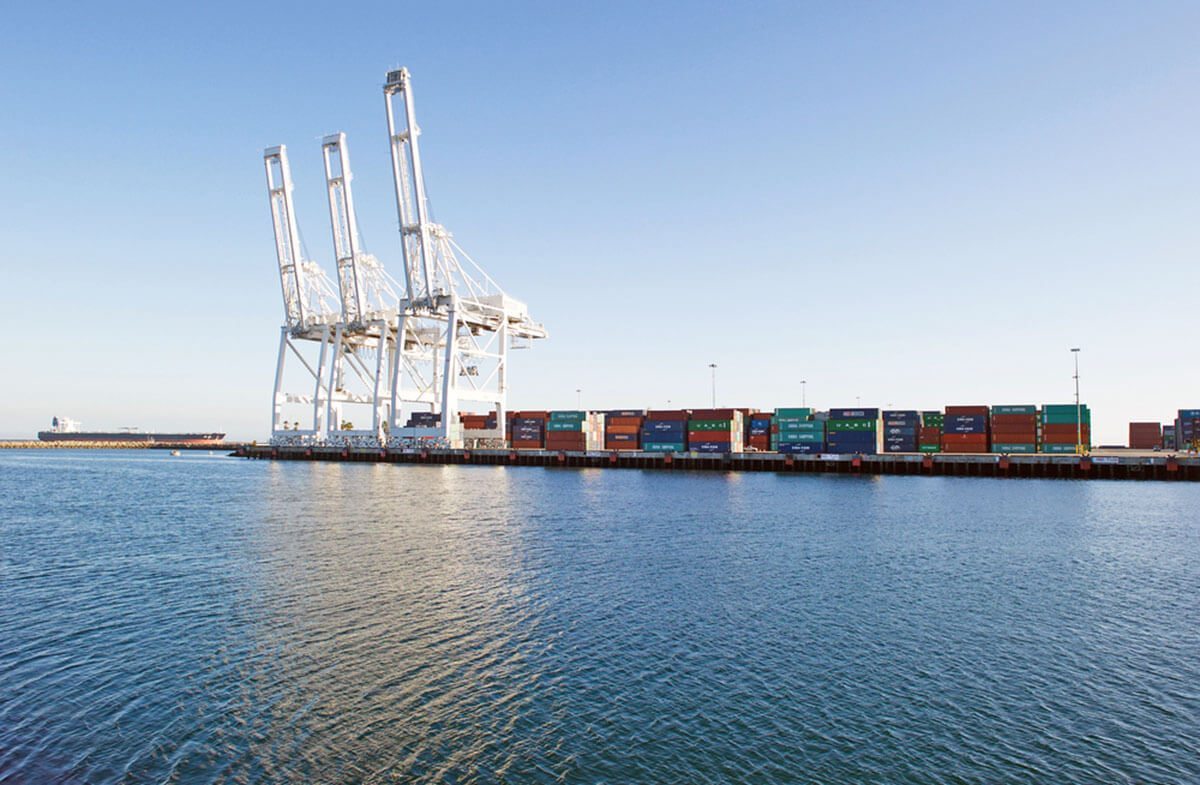Asbestos Exposure in Long Beach Naval Shipyard

The Long Beach Naval Shipyard operated from 1943 to 1997 at Terminal Island, between the cities of Long Beach and San Pedro, California. It was acquired during World War II for naval fleet anchorage and operations. It closed in 1950, only to be reopened months later when the Korean War began. A South Korean shipping firm now operates on the site of the former Long Beach Naval Shipyard.
Many former shipyard workers have developed diseases such as mesothelioma as a result of asbestos exposure at shipyards. The nationally recognized asbestos attorneys at Belluck & Fox have successfully represented many former shipyard workers in cases against companies that supplied asbestos to U.S. Navy yards. If you have been diagnosed with mesothelioma or another asbestos-related disease, contact us now to learn about your legal rights.
History of Long Beach Naval Shipyard
The Navy purchased 104 acres of oceanfront for $1 in 1940 from the City of Long Beach. In 1943, the U.S. Naval Dry Docks, Roosevelt Base, California, opened with 300 workers. Two name changes would follow, first in 1945, when the facility became known as Terminal Island Naval Shipyard, and again in 1948, when the facility officially became known as the Long Beach Naval Shipyard.
During World War II, the shipyard performed routine and battle damage repairs to Navy ships and served as a fuel and supply depot as well as a convoy formation point for ships on war deployment to the Pacific arena. From 1943 to 1945, more than 300 major repairs were performed on battleships, cruisers, destroyer escorts, and oil tankers at Long Beach. In August 1945, civilian employment reached a peak of 16,091.
Although the shipyard was inactivated on June 1, 1950, the Korean War began just weeks later, on June 25, and reactivation took place on January 4, 1951. From that time until its closing, the yard provided fleet support for the Southern California area, mostly in the form of non-nuclear surface ship overhaul and maintenance. No ship was ever built exclusively at Long Beach, but many were refurbished or repaired there, and ships including the USS Missouri and USS New Jersey were based there. The yard also supported special projects such as POLARIS, POSEIDON, and SEALAB.
Shipyard civilian employment averaged 7,500 from the early 1950s to the early 1980s, but 17,000 jobs were lost in the area when 38 Long Beach-based ships were assigned to other West Coast home ports in 1991. By 1994, just 3,000 civilians — in addition to 800 military personnel — were employed at Long Beach Naval Shipyard.
The yard’s closure was announced in 1995 and took effect in 1997. Property ownership has subsequently transferred to the City of Long Beach for use by the Port of Long Beach — one of the busiest container terminals in the country and a major gateway for U.S. trade with Asia.
Asbestos Exposure at Long Beach Naval Shipyard
In April 1978, Joseph Califano Jr., secretary of health, education and welfare, issued a warning that between 8 million and 11 million workers had been exposed to asbestos since the beginning of WWII. Among those most at risk for exposure, he said, were shipyard workers.
A year prior to Califano’s statement, renowned occupational health expert Dr. Jean S. Felton conducted a survey of 6,640 Long Beach Naval Shipyard workers and found that more than 1,000 had abnormal X-ray findings consistent with inhalation of asbestos fibers. More than one-third of those surveyed who had worked at the shipyard at least 17 years had the lung-scarring disease asbestosis, which has a typical latency period of 10 to 20 years following exposure to asbestos. Mesothelioma, an incurable asbestos-caused cancer that affects the linings of the lungs and abdomen, has a longer latency period of 15 to 60 years.
The Navy made wide use of asbestos until the early 1980s, and every Navy vessel built until that time had asbestos-containing products, including boiler and turbines, valves, insulation, electrical equipment, distillation equipment, pumps, heaters, air compressors and more.
Long Beach Naval Shipyard was a major West Coast naval ship repair and refurbishment facility, with 17 workshop areas where workers were subjected to breathable asbestos dust as they performed conversion, repair, and overhaul work. Jobs such as removing and installing pump packing material, valves, brakes, and gaskets exposed workers to asbestos. Decades later, these workers are still at risk of developing mesothelioma, lung cancer, and asbestosis.
Belluck & Fox Fights for the Rights of Shipyard Workers and Navy Veterans
If you or a loved one has been diagnosed with an asbestos-related disease such as mesothelioma, you may be entitled to compensation from the asbestos companies that put you in harm’s way. The knowledgeable asbestos attorneys at Belluck & Fox have helped many civilian shipyard workers and navy veterans with asbestos and mesothelioma claims. Schedule a free case review, and find out how we can help you and your family.
Sources:
- State of California, Department of Toxic Substances Control: California Military Base Reuse
- All Hands Magazine (U.S. Navy). December 1979 Issue. Asbestos, the Insulation that Lingers
- Long Beach Press Telegram: Quick Facts About the Long Beach Naval Shipyard
- Star News: New Study Links Shipyard Exposure, Disease. Retrieved from Google News.
